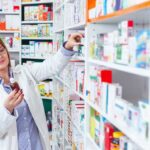Table of Contents
As much as we may try to fight it, there’s no avoiding the fact that digital technology has both changed the way we interact with others, and established a strong, ongoing influence on everything else such as how we shop, get information and spend our leisure time. With stats suggesting that pretty much everyone is spending some time online every day, and a large number of folks are almost living in a virtual world, it isn’t something that can be ignored if you want to connect with others in the twenty-first century.
Those who are looking to make contact with a target audience of health conscious or curious people will find there really isn’t much of an alternative to making that break into the online world. It may seem like a momentous task, but there are lots of benefits to forging an online identity, including the most obvious – being able to share information and build a dedicated group of followers.
The Ideal Online Presence
Chances are, you have some experience with the internet, although possibly not with anything more formal than some online shopping or using Facebook. That isn’t a particular drawback, though you may need to look for help and advice on actually setting things up.
The most useful way to establish yourself as an online authority involves a three-pronged approach, covering the development and running of one, or a combination of the following – a website, blog and social media identity.
Creating a Website
This can mean anything from making a pretty bare one page site, which basically exists just to provide some sense of legitimacy for what you are doing, to a detailed site with several sections.
If people search for you online, a bare bones website which explains who you are and what you are doing can be useful, especially if you plan to sell products or raise cash some other way. On the other hand, you may choose to use a website as a kind of one-stop-shop, so visitors arriving on your landing page can then navigate to a blog, sales pages, and so on.
If you are going plain, make sure it still looks professional and is entirely functional from the get-go. There’s nothing worse than ‘updating in progress’ or ‘’information coming soon’ messages on half done sites. Fill one page with clear information such as a mission statement, contact details or whatever is vitally important for your subject area.
If you want the website to be the focal point of several different aspects of your health and wellness adventure, spend time thinking of a good name and how you want to organise the information it will include. Make sure the obvious things are there, such as maps for locations or whatever is especially vital.
Some essentials include a clear and easy and way for you can be contacted – not just social media links, a secure payment option (if this is relevant), a reliable host – people don’t have the patience to keep trying to connect to a site that is often out of action or slow. And, of course, make sure your site can be read easily on all devices by having it optimised to suit all screens.
Creating and Maintaining a Blog
Blogs are useful only if they are nurtured and updated regularly. That doesn’t have to mean daily postings, but a regular routine is important – create one and stick to it for best results. Encourage interactions by installing a good discussion platform. There is always a risk of trolling or spam comments, but these can be reduced or even avoided altogether by using a provider which requires registration before commenting is enabled.
Create clear sections for your blog, with obvious labels. As a blogger, you have a lot of freedom; your site could focus on one aspect of your subject area, such as relating your personal journey, or it could be a mix of opinion, interesting links, and tips relating to the topic of area you are writing about.
Health and wellness is a pretty constant winner as it plays a huge part in most people’s lives. People are always keen to learn about the latest diets or food trends. Some bloggers may choose to offer opinions, or try out these approaches and report back with results. If you are anti-faddy eating your focal point may be more about how to avoid falling victim to them.
Another popular approach to health and wellness blogging is to cover more general health improvement treatments, such as how to self massage, tips on reducing stress and the importance of mindfulness. This is a good way to cover the always popular (and often searched for) topics, while also tackling trending health practices. Readers tend to appreciate straightforward advice on things such as the best places to buy a high quality coffee based supplement or the benefits/drawbacks of choosing a gluten free diet based on lifestyle, not need.
Social Media
Facebook seems to be popular pretty much across the board, while Twitter etc. have narrower appeal. You don’t necessarily need to create an identity on every single social media platform around, in fact it’s better to be a little selective, as some will be more popular with your target market of readers than others. For example, Snapchat and Instagram appeal more to younger people of all genders, while Pinterest seems to attract older women.
Be Consistent
Whichever platform you choose to use, do make a plan so you can be consistent with your updates. If you have no experience of using social media, it may be worth investing in a short course, (there are plenty online), to get yourself started.
Don’t Overload
Unless you have a dedicated team of people to share the burden with, it is wiser to choose a couple of key platforms and make the most of them. One issue with an increasingly online world is that people expect an almost instant response to queries and comments, so trying to manage too many different things could soon take up all your time.
When you are organised and in control of it there are endless benefits to be gained from the online world – so make the most of it and get started today.











